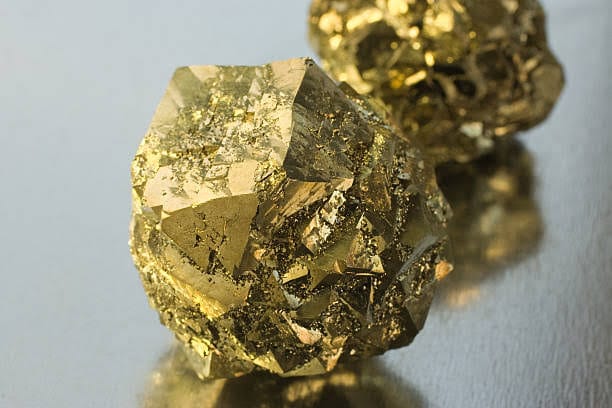Geology Optional – Complete Guide for UPSC Aspirants
Geology Optional has emerged as one of the most scoring optional subjects in the UPSC Civil Services Examination, especially for candidates with a science or engineering background. With a well-defined syllabus, straightforward concepts, and a predictable question pattern, this optional offers the potential to score 270+ marks with systematic preparation.
Why Choose Geology Optional?
Many toppers and subject experts recommend Geology Optional for UPSC because of its:
- Static Syllabus: Minimal overlap with dynamic current affairs.
- High Scoring Potential: Straightforward, fact-based questions with diagrams.
- Predictable Question Pattern: Repeated themes from previous years.
- Shorter Preparation Time: Easier to master compared to humanities optionals.
This makes it ideal for candidates with backgrounds in Geology, Geography, Civil Engineering, Mining Engineering, or Environmental Sciences.
Geology Optional Syllabus for UPSC
The Geology Optional syllabus is divided into Paper I and Paper II
UPSC Geology Optional Paper I
1. General Geology
- The Solar System, meteorites, origin and interior of the Earth, age of Earth.
- Volcanoes — causes, products, volcanic belts.
- Earthquakes — causes, effects, seismicity of India.
- Island arcs, trenches, mid-ocean ridges; continental drift; seafloor spreading; plate tectonics; isostasy.
2. Geomorphology & Remote Sensing
- Basic geomorphology: weathering, soil formation, landforms, slopes, drainage, geomorphic cycles, morphology vs structure/lithology.
- Coastal geomorphology; geomorphology of the Indian sub-continent; applied geomorphology (mineral prospecting, engineering, hydrology, environment).
- Aerial photographs & interpretation (merits/limitations). Electromagnetic spectrum; orbiting satellites & sensor systems; Indian remote sensing satellites; satellite products; applications of remote sensing; GIS & GPS applications.
3. Structural Geology
- Geologic mapping and map reading; projection diagrams.
- Stress and strain ellipsoid; stress-strain relations (elastic, plastic, viscous); strain markers.
- Behaviour of minerals/rocks under deformation; folds, faults, joints — classification & mechanics; structural analysis (foliation, lineation); unconformities; time-relationship between crystallization and deformation.
4. Paleontology
- Species concept and nomenclature; megafossils & microfossils; modes of preservation.
- Microfossils: types and applications (correlation, petroleum exploration, palaeoclimate, palaeoceanography).
- Evolutionary trends (Hominidae, Equidae, Proboscidae), Siwalik fauna, Gondwana flora & fauna, index fossils and significance.
5. Indian Stratigraphy
- Classification of stratigraphic sequences (litho/ bio/ chrono/ magnetostratigraphy) and interrelationships.
- Distribution & classification of Precambrian rocks of India; Phanerozoic stratigraphy of India (fauna, flora, economic significance).
- Major boundary problems (Cambrian/Precambrian, Permian/Triassic, Cretaceous/Tertiary, Pliocene/Pleistocene); paleogeography, igneous activity; tectonic framework and evolution of the Himalayas.
6. Hydrogeology & Engineering Geology
- Hydrologic cycle; genetic classification of waters; subsurface water movement; springs.
- Aquifer properties: porosity, permeability, hydraulic conductivity, transmissivity, storage coefficient; classification of aquifers; groundwater chemistry; salt-water intrusion; well types and recharge.
- Drainage basin morphometry; groundwater exploration and management, rainwater harvesting.
- Engineering properties of rocks; geological investigations for dams, tunnels, highways, bridges; rock as construction material; landslides — causes, prevention, rehabilitation; earthquake-resistant structures.
UPSC Geology Optional Paper II
1. Mineralogy
- Crystal systems and symmetry classes; international crystallographic notation; projection diagrams.
- Basics of X-ray crystallography. Physical & chemical characters of rock-forming silicates; structural classification of silicates. Carbonates, phosphates, sulphides, halides; clay minerals.
- Optical properties: pleochroism, extinction angle, double refraction, birefringence, twinning, dispersion.
2. Igneous & Metamorphic Petrology
- Magma generation and crystallization; important binary/ternary systems (e.g., albite-anorthite, diopside-anorthite). Bowen’s reaction series; magmatic differentiation & assimilation.
- Petrography & petrogenesis of granites, syenites, diorites, basic & ultrabasic rocks, charnockite, anorthosite, alkaline rocks; carbonatites; Deccan volcanic province.
- Metamorphism: types/agents; metamorphic grades/zones; phase rule; facies of regional/contact metamorphism; ACF/AKF diagrams; textures/structures; metamorphism of arenaceous/argillaceous/basic rocks; metasomatism, granitization, migmatites; granulite terrains of India.
3. Sedimentary Petrology
- Processes of formation, digenesis and lithification; classification of clastic/non-clastic rocks; petrography and depositional environments.
- Sedimentary facies and provenance; sedimentary structures and their significance; heavy minerals and sedimentary basins of India.
4. Economic Geology
- Ore, ore minerals & gangue; tenor of ore; classification of ore deposits; processes of ore formation & controls on localization; ore textures & structures.
- Metallogenic epochs & provinces; geology of major Indian deposits (Al, Cr, Cu, Au, Fe, Pb, Zn, Mn, Ti, U, Th, industrial minerals). Coal and petroleum deposits; National Mineral Policy; conservation & utilization.
- Marine mineral resources and Law of the Sea.
5. Mining Geology
- Prospecting methods (geological, geophysical, geochemical, geobotanical); sampling techniques.
- Estimation of reserves; exploration & mining methods for metallic ores, industrial minerals, marine mineral resources, building stones. Mineral beneficiation & ore dressing.
6. Geochemistry & Environmental Geology (including Natural Hazards)
- Cosmic abundance of elements; planetary & meteorite composition; elemental distribution in Earth. Trace elements; basics of crystal chemistry, isomorphism, polymorphism; elementary thermodynamics.
- Natural hazards: floods, mass wasting, coastal hazards, earthquakes, volcanic activity and mitigation. Environmental impacts of urbanization, mining and industrial activity; pollution of ground & surface water; marine pollution; legislative & protection measures; sea-level changes (causes & impact).
Best Books for Geology Optional
| Topic | Recommended Books |
|---|---|
| Mineralogy | Dana’s Manual of Mineralogy, Perkins – Mineralogy |
| Petrology | Winter – Petrology, Philpotts – Igneous and Metamorphic Petrology |
| Structural Geology | Billings – Structural Geology, Ramsay & Huber |
| Stratigraphy | Ravindra Kumar – Historical Geology of India |
| Paleontology | Shrock & Twenhofel, Jain & Anantharaman |
| Economic Geology | Bateman – Economic Mineral Deposits |
Strategy to Prepare Geology Optional
- Start with the Basics: NCERTs and B.Sc. notes for conceptual clarity.
- Make Concise Notes: Summarise definitions, classifications, and processes.
- Focus on Diagrams: Practice neat, labelled geological sketches.
- Solve Previous Year Questions: Identify recurring patterns.
- Revise Multiple Times: Geology Optional demands memory retention.
Previous Year Trends for Geology Optional
A significant portion of questions are repeated or based on predictable topics. Many candidates find Palaeontology, Mineralogy, and Stratigraphy to have the highest repetition rates.
Geology Optional Answer Writing Tips
- Always draw diagrams wherever possible.
- Use bullet points instead of long paragraphs.
- Highlight key terms and mineral names.
- Mention Indian examples for stratigraphy and mineral deposits.
How to Score 270+ in Geology Optional
- Cover the entire syllabus at least twice before the mains.
- Keep separate notes for Paper I and II.
- Dedicate the last month before mains to full-length mock tests.
- Use UPSC language – concise, factual, and diagram-supported answers.
Final Words
With the right approach, Geology Optional can be your secret weapon for clearing UPSC with a high score. It rewards disciplined preparation, diagram-based answers, and syllabus-focused study.
If you’re consistent, strategic, and exam-oriented, this optional can significantly boost your final rank.



